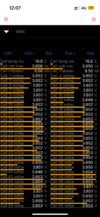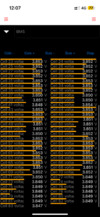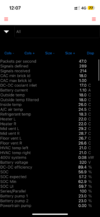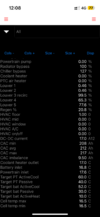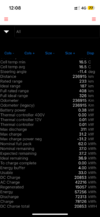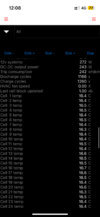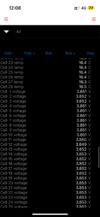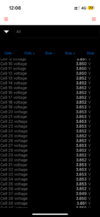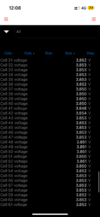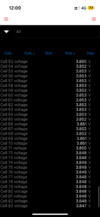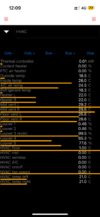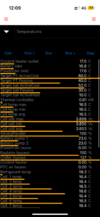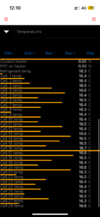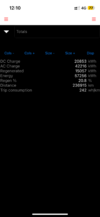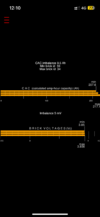Hi guys, I was wondering if there is anyone here who could check data for me and see if that pack is healthy.
Car in question is Tesla Model S 75D from July 2018 with 147,212 miles / 236,195km
I have purchased Scan my Tesla accessories and trying to get to the bottom of data, I mean everything looks OK to me but it is very hard knowing without comparing these figures to a similar car to mine.
Things which are worrying, maybe they are not.
Battery current SOC is at 57%
*Battery voltage is showing as 320V - should we be concerned here or not at all? I believe 75kwh packs are 350V not 400V so maybe at higher SOC it will be closer to 350V?
*Battery degradation, it is showing as nominal capacity of 62KwH, which depend what figure we actually use for brand new battery pack, it is about 13% degradation, seems a bit high considering that DC charging was only about 30% of total charging, the rest was AC charging at home.
*Cells - well the number of cells looks strange to me, it appears that there are 83 not 84 cells? Does it sound correct?
*Cells voltage, it seems to be varying from 3.847V to 3.853V does it seems correct or too low, again it might be ok at 57% SOC, am I reading i right?
Based on pics, is there anything else in the data I should be concerned about please?


Car in question is Tesla Model S 75D from July 2018 with 147,212 miles / 236,195km
I have purchased Scan my Tesla accessories and trying to get to the bottom of data, I mean everything looks OK to me but it is very hard knowing without comparing these figures to a similar car to mine.
Things which are worrying, maybe they are not.
Battery current SOC is at 57%
*Battery voltage is showing as 320V - should we be concerned here or not at all? I believe 75kwh packs are 350V not 400V so maybe at higher SOC it will be closer to 350V?
*Battery degradation, it is showing as nominal capacity of 62KwH, which depend what figure we actually use for brand new battery pack, it is about 13% degradation, seems a bit high considering that DC charging was only about 30% of total charging, the rest was AC charging at home.
*Cells - well the number of cells looks strange to me, it appears that there are 83 not 84 cells? Does it sound correct?
*Cells voltage, it seems to be varying from 3.847V to 3.853V does it seems correct or too low, again it might be ok at 57% SOC, am I reading i right?
Based on pics, is there anything else in the data I should be concerned about please?



